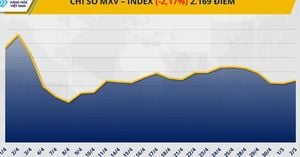The Argentine Football Association (AFA) has officially approved significant changes to the format of the Primera División for the 2025 season, sparking debate among fans and experts alike. This decision, made during a recent Executive Committee meeting, eliminates the long-standing all-against-all championship format and introduces two separate tournaments featuring 30 teams divided across two zones of 15 teams each.
The restructured competition signals not only the return of relegations—suspended this year—but also aims to refresh the competitive spirit of Argentine football. Each club will play at least 32 matches throughout the year, not counting playoff rounds. The first tournament is expected to kick off on either January 23 or 24, closely followed by the second tournament starting on July 10 or 11.
Interestingly, the format resembles practices seen elsewhere, such as Major League Soccer (MLS) in the United States. Clubs will engage primarily within their respective zones, playing 14 fixtures, complemented by two interzonal matches drawn at random. “Cada club jugará un mínimo de 32 partidos sin contar instancias finales,” officials noted.
One of the more controversial elements of the new format involves its playoff design. The top eight teams from each group will qualify for knockout rounds, with the higher-seeded teams enjoying home advantage until the semifinals, which, alongside the finals, will be held at neutral venues. Critics have pointed out this decision diminishes the home crowd’s role during pivotal matches.
Despite the excitement this radical overhaul may bring, it has been overshadowed by concerns for loyal supporters, who now face higher ticket prices for fewer guaranteed matches. The number of games any team plays can drop from 41 down to as few as 32, as the association has moved away from traditional long championships. “Habrá fútbol los 12 meses del año y mejor previsibilidad en la programación,” AFA insists, trying to soothe the discontent.
This shift was partly driven by operational necessities, as AFA wanted to establish predictable calendars for fans and broadcasters alike. The precarious financial climate of many clubs triggered these discussions, alongside the overarching need for competitiveness within the leagues. The narrative surrounding the format change was made complete by recent promotions from lower divisions—Aldosivi and San Martín—bringing the total staking their claim to the top tier back to 30 teams, thereby necessitating the tweak.
Adding interestingly to the mix, the AFA has also designated time for classic matches and interzonal games, making sure fans aren’t completely abandoned. There will be notable alterations to local rivalries and classic fixtures, ensuring teams host at least one of each type of match annually to maintain the rivalry spirit alive, albeit inverted.
This revision is set against the backdrop of other recent developments within the AFA, including Claudio “Chiqui” Tapia’s reelection and his concurrent hopes to secure the future of the sport across the Argentine provinces. It’s no secret many pushed for longer formats, which would allow for comprehensive competitive leagues found all over the world. Yet, the current decision seems to favor shorter campaigns directly tied to playoff qualifications.
Determining relegations remained another contentious point. The reinstatement signifies two teams will descend to lower divisions: one based on overall performance, the other through averages. AFA officials stated, “La competencia del segundo semestre repite el formato del torneo de la primera etapa con la diferencia que se invierten las localías.”
For many clubs, the ramifications of this decision will stretch beyond the pitch. Supporters have noted the financial burden seems to outstrip benefits, as club officials will now face irate fans when it becomes clear they receive fewer games for the same—or higher—ticket prices. Traditionally, clubs had to balance identity and community expectations with league requests, but this change compels them to factor economic realities even more heavily.
Some administrators cautiously observed shifts as the new patterns emerge. They will wield arguments about competitiveness and financial health alongside impending rumblings from fans dissatisfied with fewer home matches and increased costs. Such discussions are likely to dominate the months leading up to the launch of this innovative new system, with both supporters and pundits eagerly awaiting to see how it plays out.
Overall, the 2025 format redesign pivotally reshuffles Argentine football’s structure, with its success contingent on the satisfaction of clubs, players, and the passionate fanbase driving the game forward. Will this pivotal shift rejuvenate the league, or will it deepen existing divisions among stakeholders? Only time will tell as all eyes fixate on the impending season.



